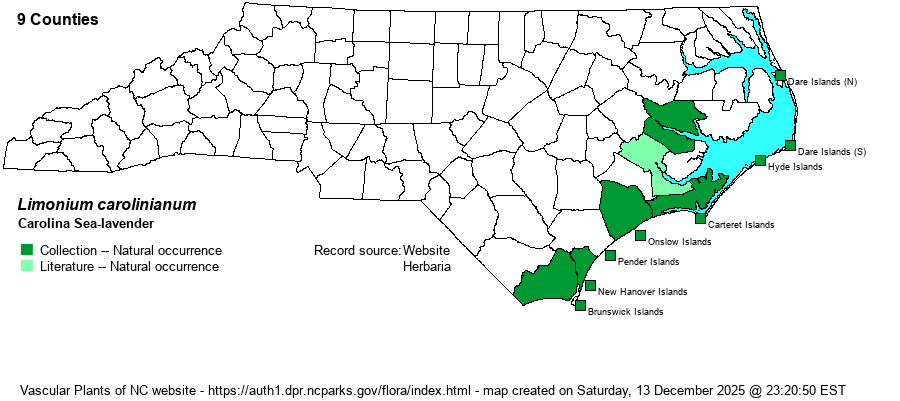| Author | (Walter) Britton | |
| Distribution | Present nearly throughout the coastal region, though no record yet for Currituck County.
This is a strictly coastal species, ranging from eastern Canada south to southern FL and west to the entire coast of TX. | |
| Abundance | Common along the coast of the barrier islands, less numerous in the upper reaches of sounds and embayed rivers. | |
| Habitat | This is a species of brackish marshes, tidal flats, and less so in slightly oligohaline marshes. |
| Phenology | Blooms from August to October, and fruits shortly after flowering. | |
| Identification | This is one of relatively few flowering plants of brackish marshes, it having no close relatives in the state. It is a very slender herb, growing to about 2 feet tall, with numerous ascending branches to give a flat-topped look to each plant. It has a basal rosette of large elliptical leaves with gradually tapering bases, each leaf about 4 inches long and about 1-inch wide. The stem is leafless and has numerous branches, along which grow the many small lavender to pale lavender-blue flowers, each on the top side of a branch; a flower is only about 1/5-inch across, at best. But, as there are dozens of such flowers, the plant in full bloom is quite showy or at least quite noticeable as you are walking in or along the edge of a brackish marsh. | |
| Taxonomic Comments | Some references treat Limonium as having several species in the Southeast, or at least several varieties/subspecies. RAB (1968) listed two species with two varieties for each, but Weakley (2018) and some others feel that it is best to treat it as a "polymorphic L. carolinianum".
| |
| Other Common Name(s) | Lavender Thrift | |
| State Rank | S4 | |
| Global Rank | G5 | |
| State Status | | |
| US Status | | |
| USACE-agcp | OBL link |
| USACE-emp | OBL link |

